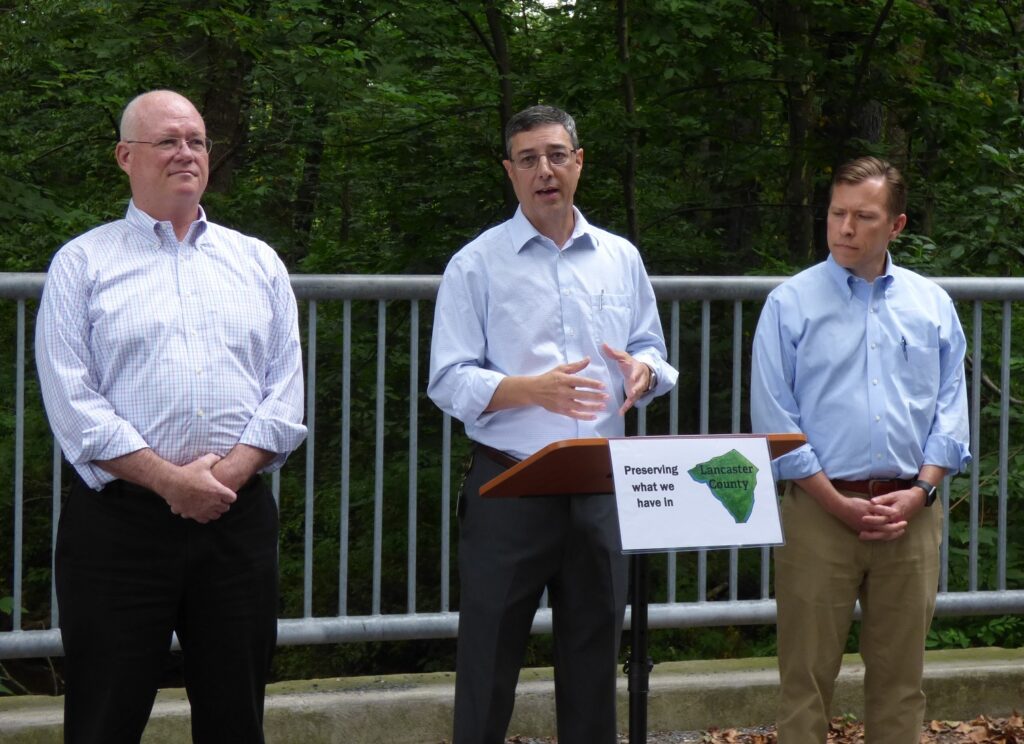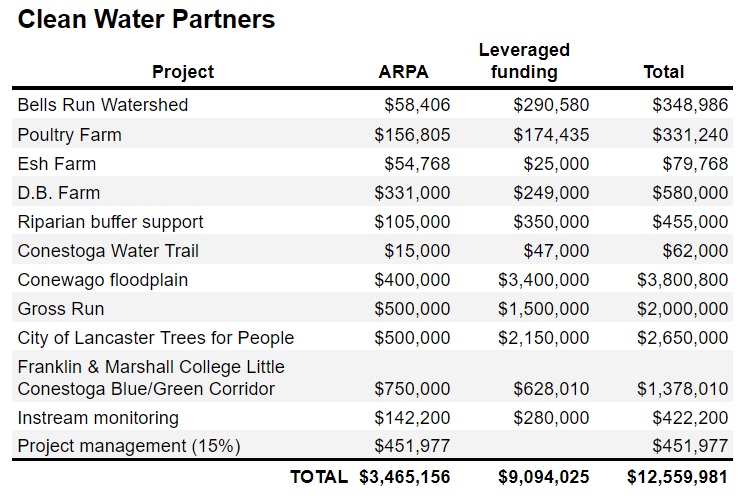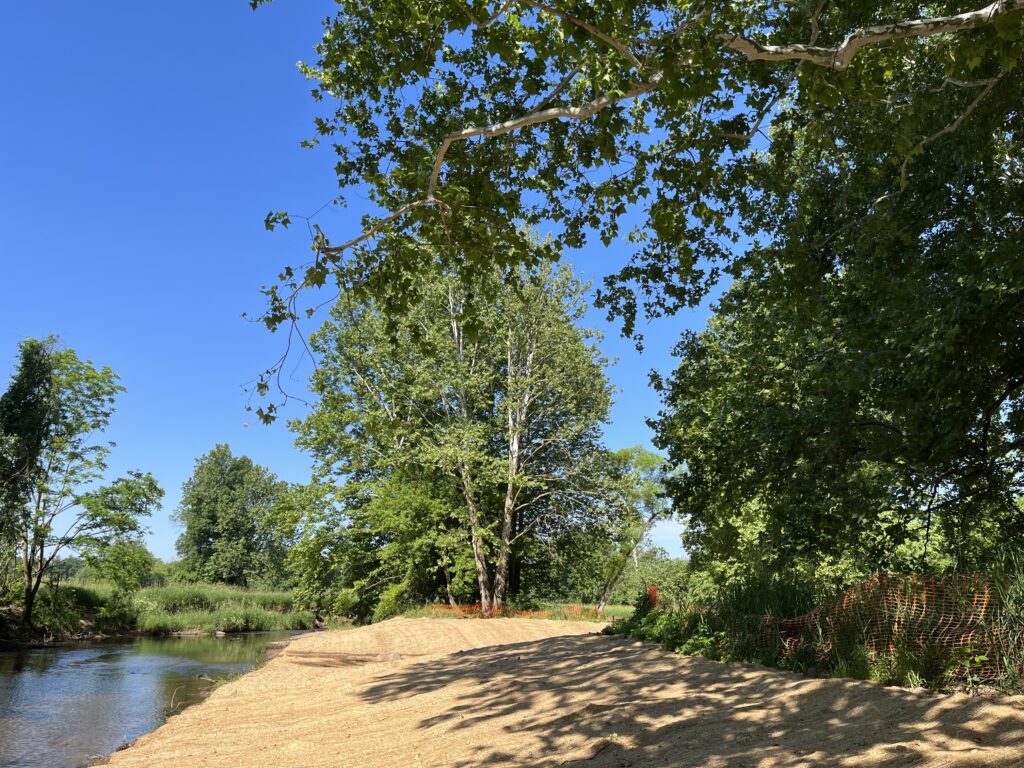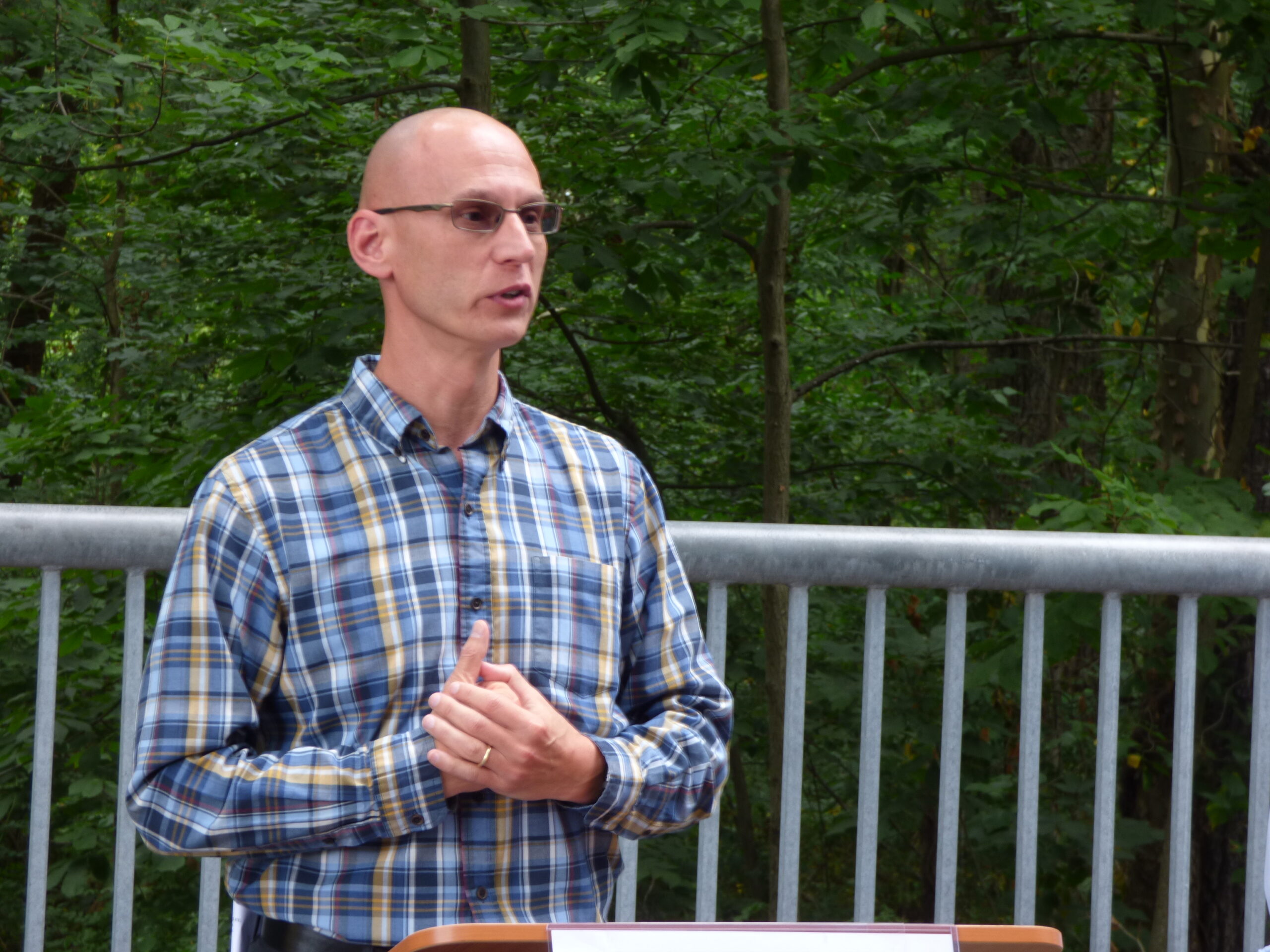The Lancaster County commissioners, local officials and members of the Lancaster Clean Water Partners gathered Tuesday at the Conewago Recreational Trail trailhead near Elizabethtown to celebrate the county’s largest-ever investment in water quality.
Earlier this month, the commissioners approved disbursing nearly $3.5 million from the county’s American Rescue Plan Act funding to the Clean Water Partners via the Lancaster County Conservation District.
That money will support 11 high-priority stream restoration and pollution mitigation projects, leveraging just over $9 million in additional funding.

In selecting what to fund with ARPA dollars, the commissioners have prioritized preservation of “what we hold most dear,” namely Lancaster County’s beautiful natural landscape, Commissioner Ray D’Agostino said.
For the community, it’s a “win-win-win,” he said: Clean-water projects help to preserve the environment, enhance outdoor recreational opportunities and support the county’s economy.

Together, the projects “sew a quilt that only Lancaster County could create” and will result in “positive impacts that last for generations,” said Allyson Gibson, Director of Strategic Partnerships and Programs for Clean Water Partners.
They contribute to Clean Water Partners’ ultimate goal, she said: “Clean and Clear by 2040.”
Pollutant runoff
Hundreds of miles of Lancaster County streams are contaminated by “nutrient pollution” — fertilizer runoff from farms. The county is Pennsylvania’s No. 1 source of nutrient pollution in the Chesapeake Bay watershed and is being tasked with a little over 20% of the state’s overall nutrient reduction as part of the multi-state bay cleanup plan.

The Clean Water Partners are implementing the Lancaster Countywide Action Plan. Fully implemented, it will lead to 11.7 million pounds in nitrogen reduction and 524,000 pounds in phosphorus reduction, the coalition says.
The 11 ARPA-funded projects were whittled down from an initial list of 50, which in turn are just a subset of all the projects Clean Water Partners wants to complete. The organization will continue seeking funding to move all its projects forward, Gibson said.
Every dollar helps, because the need is so great, and everyone has a role to play, said Chris Thompson, the Lancaster County Conservation District’s director.

Floodplain restoration at Conewago Creek
Clean-water projects also advance the goals of sediment reduction and flood control — something the visit to the Conewago Recreational Trail allowed the commissioners to see first-hand.
Last year, the Lancaster Conservancy announced acquisition of 155 acres along the trail for preservation. The property is near an industrial park and was being threatened with development.
Instead, it is now the site of a three-phase, $3.8 million floodplain restoration project. Phase 1 recently wrapped up; Phases 2 and 3 should be done by spring 2023, senior project manager Shawn Fabian of HRG said.

In all, about 130,000 cubic yards of sediment are being removed, lowering the high stream banks that now limit the Conewago Creek to a relatively narrow channel. When the project is finished, it will undulate lazily through a low wetland, an environment that will have the capacity to absorb millions of gallons of water when it rains or snows.
That will dramatically reduce erosion and the chance of downstream flooding during heavy rains, said Fabian and Reid Garner, water resource engineer, Land Studies Inc. It will also support a healthy diversity of wildlife.
In essence, the area will look like it did before European settlers changed the landscape, Garner said.
Monitoring units will be installed that record data every 15 minutes, Conservation District watershed specialist Matt Kofroth said. That will allow the district to document real sediment reductions, rather than relying on models to estimate progress, he said.

The Lancaster Conservancy is working on a master plan for the property and envisions putting in walking paths around the creek with educational displays about the wetlands.
Steve Letavic, manager of Londonderry Township in Dauphin County, said he’s been working on this project for 17 years, ever since he met with Matt Royer, Director of the Penn State Agriculture and Environment Center and president of the Conewago Creek Association.
In his 30 years in public service, “I think this is the project I’m most proud of,” he said.












